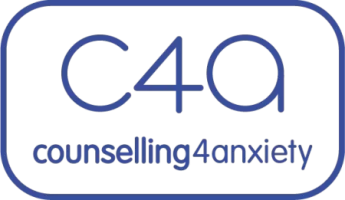Specialising in anxiety conditions such as generalised, social anxiety and obsessive-compulsive disorder has demonstrated to me how deep and ingrained cognitive distortions are in people who have suffered long-term anxiety. This is also a problem with people who may have had anxiety-related cognitions for less than five years and this depends on the strength of belief in the distorted cognitions that individuals have.
I stress this again and it is not necessarily the length of time that someone has suffered from anxiety conditions, it is the strength of believability in the cognitive distortions that pulls in people and which then hyper-fuels and stimulates a sensitised limbic system and the amygdala.
What has also been missing in many therapeutic interventions is around curiously working with clients around understanding how cognitive distortions affect many of the sensory functions of sufferers. Smell, sight (shades of colour), touch and even taste become fused in certain circumstances with distorted thoughts and these fusions are often missed in work that is done in therapy.
Therapists need to take a much wider view of the variety of sensory systems that are affected by cognitive distortions, as well as how believable the thoughts are for clients. In not addressing these sensory and cognitive fusions, therapists may miss out on how sensory stimulations and reactions keep cognitive distortions alive.
The fact is that short-term work on getting clients to understand and work on accepting alternatives to their cognitive distortions is important. Yet, many therapists do not ensure that the work is central to their therapy and many move into the framework of getting the client to understand their triggers and their family history or traumas. All of this is essential work in giving clients a wider understanding of how they have reached this point, but the point that I am trying to make is that the cognitive distortions still remain as deeply ingrained in many and continue to cause real problems for people.
Allied to this, very subtle behaviours that go with the cognitive distortions as a means of coping with them further fuel and enhance their relevance to anxiety sufferers and many of these subtle actions will not be noticeable to therapists.
Approaches in therapy that seek to let clients find alternative thinking patterns to their cognitive distortions are essential. It allows them to take ownership of alternative ways of thinking that can resonate with them. However, it is important that therapists use their natural sense of curiosity in getting clients to think as widely as possible so that they are armed with a range of alternatives that they can turn to.
Therapists should also provide psycho-education to clients to ensure that they do not use alternative interpretations of their cognitive distortions as a crutch which they automatically return to when they are anxious. This may keep the anxious thoughts alive and alternative narratives to their cognitive distortions are simply to be used as a means of getting them to think about alternatives that may 'stick' with relevance. This is subtle work, yet important.
Finally, this is subtle and nuanced work. Many of us are willing to tick a box to say that we can work on anxiety conditions; the truth is, are we really able to work with the complexities and range of anxiety conditions there are?

